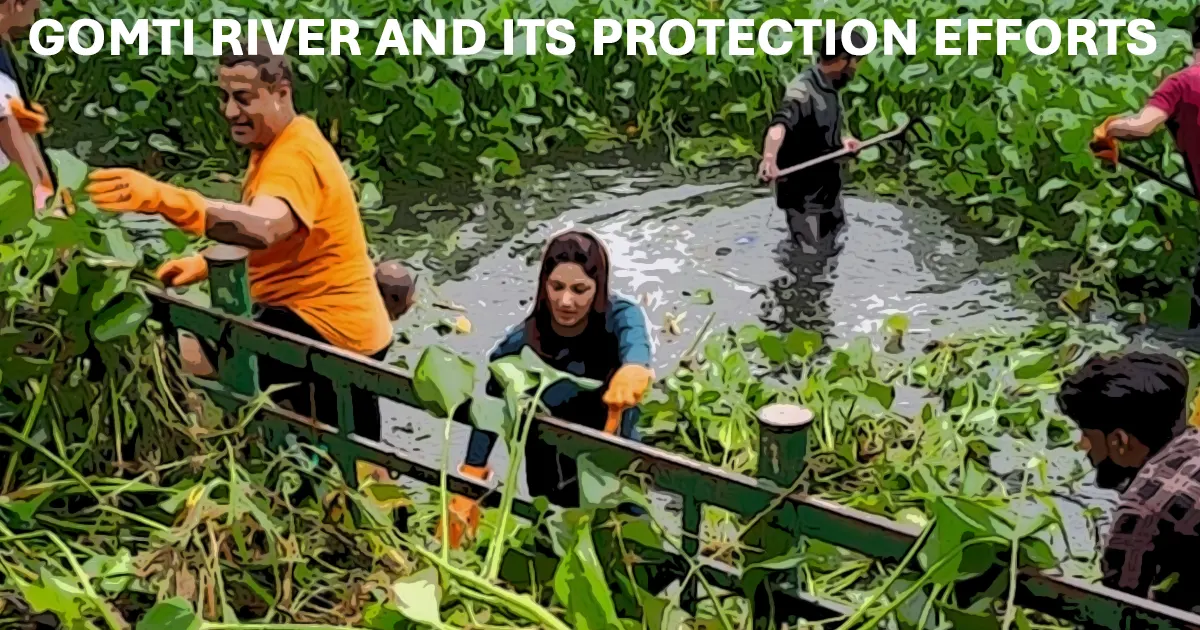GS 1 – Geography

The Territorial Army has recently set up a dedicated task force to focus on the rejuvenation and protection of the Gomti River, a vital water source in Uttar Pradesh. This initiative highlights the growing need for river conservation and the role of the armed forces in environmental protection.
About the Gomti River:
The Gomti River is a tributary of the Ganges (Ganga) River, flowing entirely within the state of Uttar Pradesh. It holds significant importance both culturally and environmentally, providing water for agricultural, industrial, and domestic use in the region.
Course of the Gomti River:
- The river originates from Gomat Taal (also known as Fulhaar Jheel) near Madho Tanda in Pilibhit district.
- It flows southward, draining areas between the Ramganga River and the Sharda River.
- As it travels, it passes through several districts, including Lucknow, Barabanki, Sultanpur, Faizabad, and Jaunpur.
- The Gomti River eventually joins the Ganges River.
Geographical Features:
- Length: The river stretches approximately 900 kilometers (about 560 miles).
- Drainage Area: It drains a basin of around 7,240 square miles (18,750 square kilometers).
- Flow Characteristics: The Gomti is a perennial river, but its flow is generally sluggish throughout the year, except during the monsoon season when heavy rainfall leads to a significant increase in runoff.
Tributaries of the Gomti:
Key tributaries that contribute to the Gomti River include:
- Sai River
- Chowka River
- Kathina River
- Saryu River
These tributaries further feed into the river, making it an essential part of the regional hydrological system.




